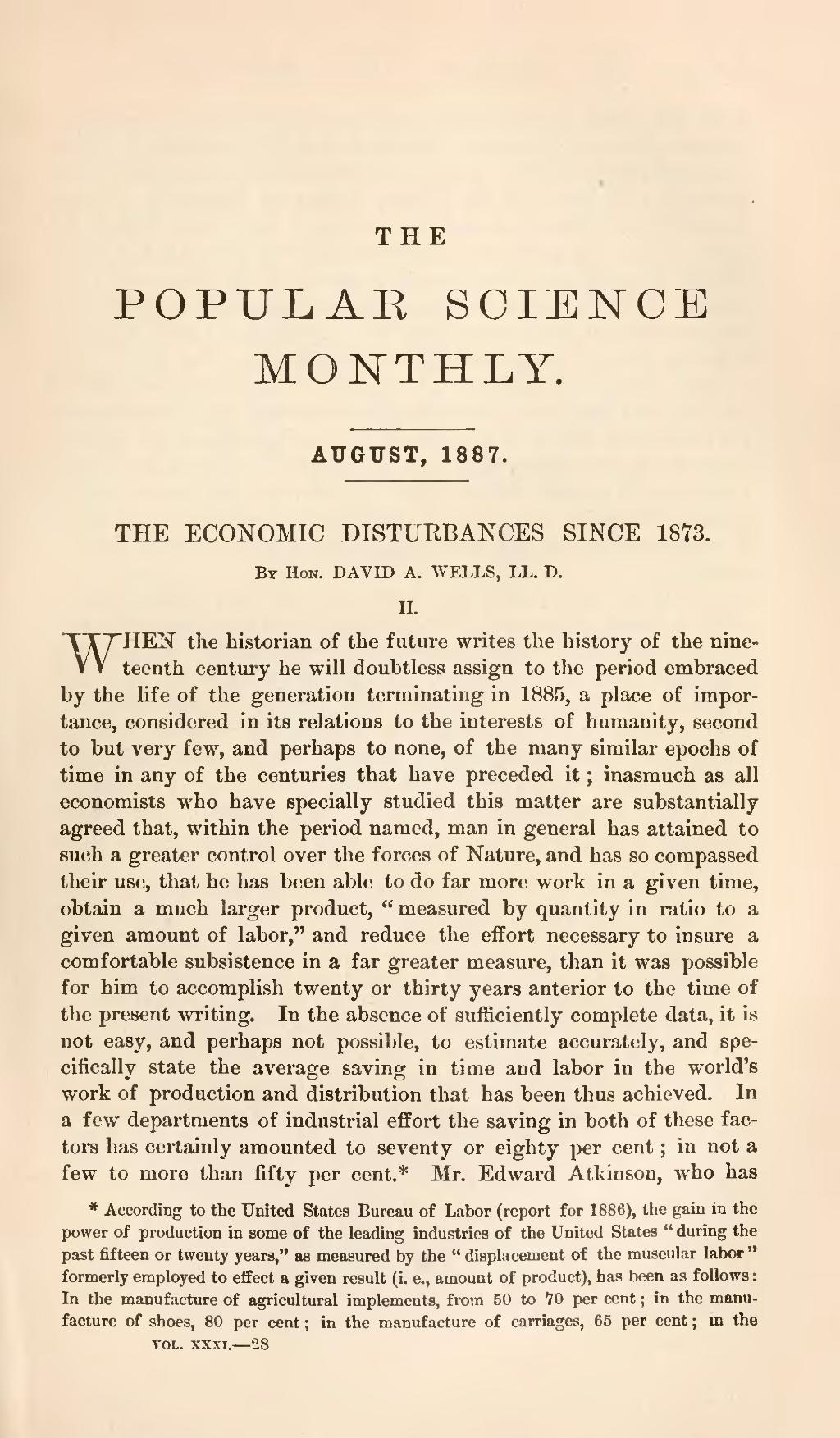THE
POPULAR SCIENCE
MONTHLY.
AUGUST, 1887.
| THE ECONOMIC DISTURBANCES SINCE 1873. |
By Hon. DAVID A. WELLS, LL. D.
II.
WHEN the historian of the future writes the history of the nineteenth century he will doubtless assign to the period embraced by the life of the generation terminating in 1885, a place of importance, considered in its relations to the interests of humanity, second to but very few, and perhaps to none, of the many similar epochs of time in any of the centuries that have preceded it; inasmuch as all economists who have specially studied this matter are substantially agreed that, within the period named, man in general has attained to such a greater control over the forces of Nature, and has so compassed their use, that he has been able to do far more work in a given time, obtain a much larger product, "measured by quantity in ratio to a given amount of labor," and reduce the effort necessary to insure a comfortable subsistence in a far greater measure, than it was possible for him to accomplish twenty or thirty years anterior to the time of the present writing. In the absence of sufficiently complete data, it is not easy, and perhaps not possible, to estimate accurately, and specifically state the average saving in time and labor in the world's work of production and distribution that has been thus achieved. In a few departments of industrial effort the saving in both of these factors has certainly amounted to seventy or eighty per cent; in not a few to more than fifty per cent.[1] Mr. Edward Atkinson, who has
- ↑ According to the United States Bureau of Labor (report for 1886), the gain in the power of production in some of the leading industries of the United States "during the past fifteen or twenty years," as measured by the "displacement of the muscular labor" formerly employed to effect a given result (i. e., amount of product), has been as follows: In the manufacture of agricultural implements, from 50 to 70 per cent; in the manufacture of shoes, 80 per cent; in the manufacture of carriages, 65 per cent; in the
